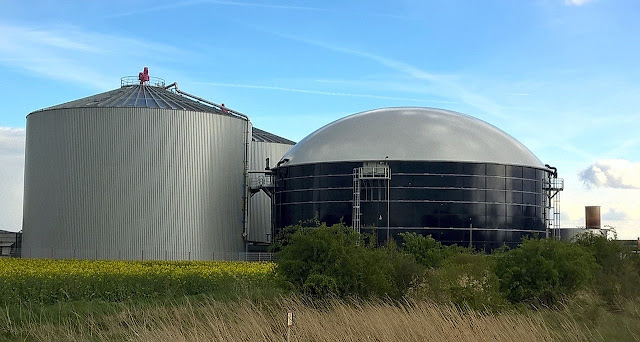Scientists call this biogas.
Biogas comes from garbage, sewage, and manure, too.
Biogas is a source of cheap energy for many villages in China. Many vehicles are fueled by methane, a mixture of biogas and carbon dioxide.
Biogas is a source of cheap energy for many villages in China. Many vehicles are fueled by methane, a mixture of biogas and carbon dioxide.
Biogas is a valuable source of energy that is often wasted. When materials decay, the biogas mixes with carbon dioxide, forming a gas called methane. Large amounts of methane can be dangerous—a tiny spark near the gas can cause an explosion. But if methane is collected safely and stored correctly, it can provide an important source of energy.
Biogas could be important in countries where other fuels are scarce or too expensive. A small village can use its own garbage and sewage to produce biogas. People collect the droppings of farm animals and put them in a tank. Some of the waste turns into liquid.
The liquid soon starts to give off methane, which is kept in a storage tank that has an expandable lid. The gas can be used in homes for cooking and heating, or as fuel to power an engine or an electric generator.
Is biogas eco-friendly fuel?
Compared to natural gas, which is extracted by drilling in the ground, biogas is obviously a more sustainable option. Natural gas is obtained through fracking, a process in which water, chemicals, and sand are forced deep into the ground to break up rock formations. The fracking process can seriously damage ecosystems and landscapes.
Another benefit of biogas is that it eliminates the large amounts of animal manure and food waste from the environment, and thus prevents nitrogen pollution and leakage into water resources.
Biogas also helps reduce methane emissions that would otherwise escape from manure dumps or lagoons. Using this methane as a fuel drastically reduces its impact on the climate by converting it to CO2, which is up to 34 times less efficient than a greenhouse gas.
But in contrast to energy generation using wind power or solar energy, during biogas production, greenhouse gases are released into the atmosphere through the systems. Methane in particular can escape at various points in production.
In addition, biogas also contains nitrogen, carbon dioxide, and nitrous oxide, among other things. The latter is only represented in small proportions but is even around 300 times as harmful as CO2. In addition, if the biogas from the plants is burned to generate energy, CO2 is produced in turn.
In addition, the transport of energy crops to the plants contributes to the negative balance of biogas.
What are the advantages of biogas?
The production of biogas brings important benefits for the environment and society :
1. Biogas is a green energy source, from which electricity and heat can be obtained.
2. Biogas is created through the fermentation of renewable raw materials, replaces fossil fuels and thus reduces greenhouse gas emissions.
3. The combustion of biogas only releases as much CO2 as the plants previously absorbed during growth. This means that biogas is one of the CO2-neutral fuels.
4. Unlike wind, water or solar energy, biogas is available without fluctuations and can be stored without any problems.
5. With biogas, organic waste from industry and households is recycled in an environmentally friendly manner.
6. Less odor nuisance when spreading liquid manure in the fields: fermented liquid manure smells considerably less than normal liquid manure and the smell wears off faster.
7. Plants absorb the fermentation substrate better than normal manure, which can increase the yield in the fields.
8. The cost of artificial fertilizers can be reduced and environmental pollution avoided.













Social Plugin